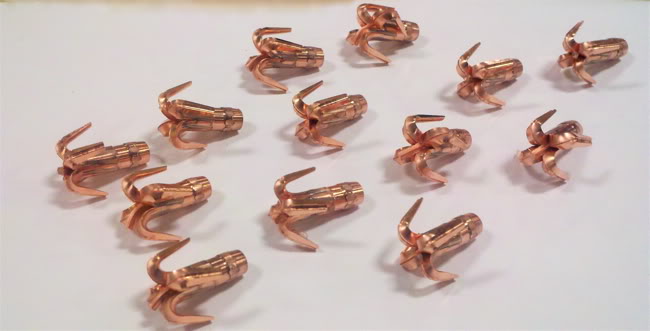

The recovered bullet had a bit of drywall dust inside the flutes but was undamaged and weighed 125.7 grains, showing it shed no weight whatsoever.įired through the plywood, the Honey Badger showered the range in splinters, and I noticed a lot of them were stuck in the front of the ballistic block. Through drywall the Black Hills Honey Badger penetrated 11.5 inches and again came to rest with the base forward.

In the bare block this bullet penetrated 157/8 inches and stopped base forward. Out of the 4.01-inch barrel of my Glock 19, it gave me 964 fps and relatively soft recoil. The subsonic load could be compared to competitors’ light-recoiling rounds meant for small guns or recoil-sensitive shooters. The issue is making sure the bullet doesn’t overpenetrate, so Black Hills and Lehigh Defense have had to adjust crossbar thickness and flute geometry individually for each caliber to produce the proper depth of penetration.īlack Hills now offers two 9mm loads in the Honey Badger line, the original 125-grain bullet deliberately loaded to subsonic velocity (1,050 fps) and a new 100-grain load advertised to do 1,300 fps. Penetration is never an issue with a Honey Badger bullet. Out of the Guard’s eight-inch barrel, the Honey Badger ammo does just shy of 1,600 fps and is my favorite defensive load for this gun. Last year I bought a CMMG Guard pistol, which is an AR-15 chambered in. 45 ACP Honey Badger load is advertised as doing 1,325 fps out of a handgun. 380 ACP bullet, even though they have similar proportions. 45 ACP Honey Badger bullet and the 60-grain. You’ll see a huge difference in shape and design between, say, the 135-grain. Note that these are not “one size fits all” bullets. And once again, because of the design of the bullet, it will not clog up or break apart going through clothing or light barriers and does not require a minimum velocity to expand as it works without expansion. In gel tests this little bullet penetrated more than 10.5 inches while creating a 6.5x2.5-inch temporary cavity. Between those crossbars, down the body of the bullet, are flutes. You will see crossbars on the front of the bullets, either with flats or sharp edges, depending on caliber. These are CNC-machined copper solid bullets and generally light for caliber. Because their performance is not dependent upon expansion, and they have homogeneous construction, their ability to penetrate intermediate barriers tends to be superior to that of traditional hollowpoints. They are designed to not care what they have to punch through to get to the target, whether it’s thick clothing or drywall. Honey Badger don’t care, which is the point of these bullets. Do yourself a favor and search for a video titled “The Crazy Nastyass Honey Badger.” You’ll thank me. If you’re wondering where the name comes from, Black Hills borrowed this licensed name from AAC, which produces a gun by that name. Working with Lehigh, Black Hills helped design a new version of the Xtreme Penetrator specifically for a line of pistol ammo that ultimately was called Honey Badger. The company’s Xtreme Penetrator bullets caught the attention of Jeff Hoffman, president of Black Hills Ammunition, a company that has its own reputation for challenging preconceived notions on ammunition and for recognizing the potential in other firms’ bullets. Lehigh Defense is a small ammunition company that thinks outside the box, and its unique approach to projectiles has gotten it a lot of attention-as much from other ammunition makers as the general public.


 0 kommentar(er)
0 kommentar(er)
